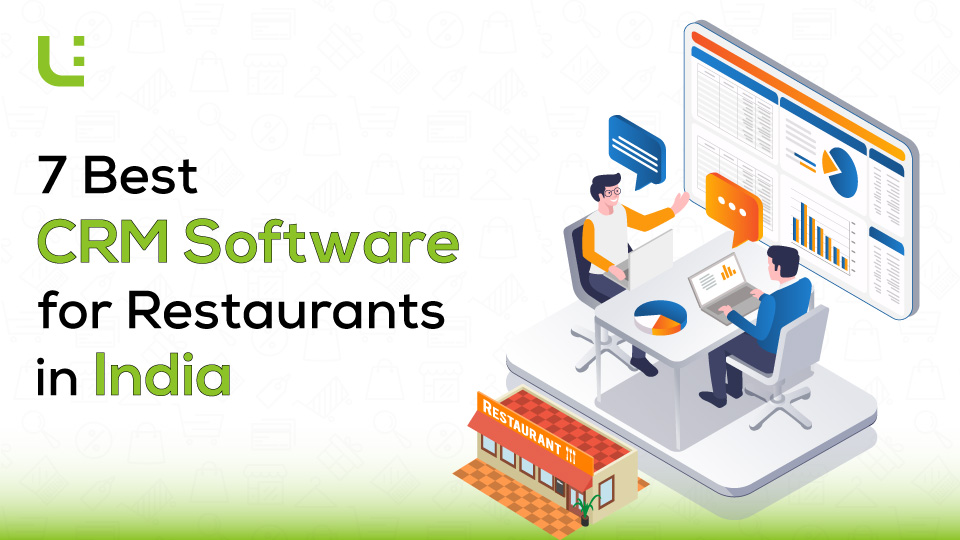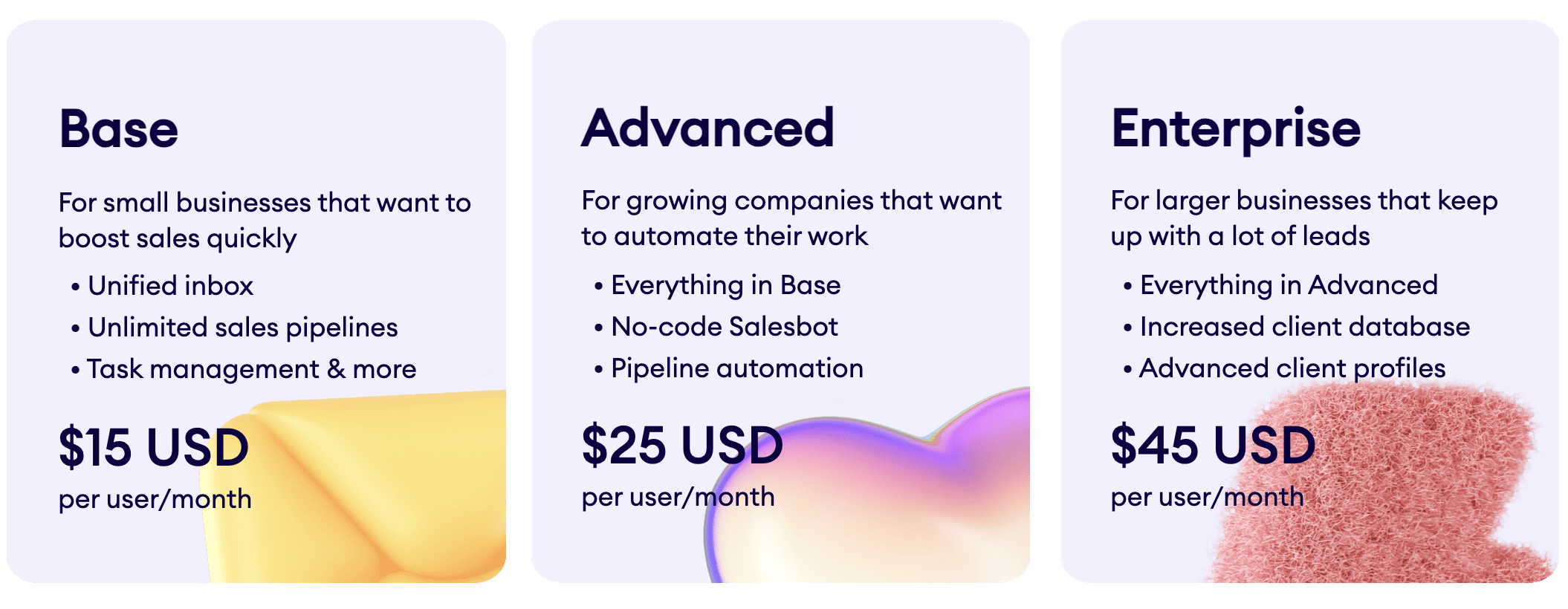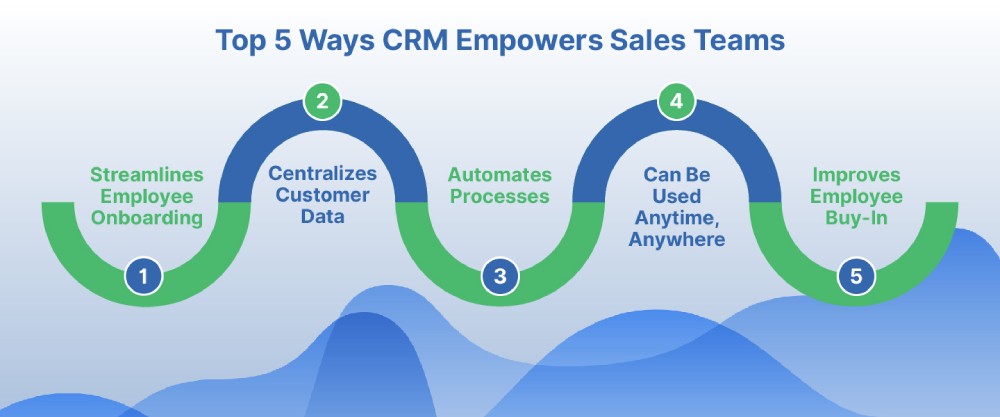
Introduction: Why Your Small Restaurant Needs a CRM
Running a small restaurant is a whirlwind of activity. You’re juggling food orders, managing staff, keeping the books balanced, and, of course, trying to keep your customers happy. In this competitive landscape, it’s not enough to simply serve great food; you need to build lasting relationships with your patrons. This is where a Customer Relationship Management (CRM) system comes in. Think of it as your secret weapon for turning first-time diners into loyal regulars.
In the past, CRM systems were largely associated with big corporations and complex software. However, the landscape has shifted. Today, there are a plethora of CRM solutions tailored specifically for small businesses, including restaurants. These systems offer a range of features, from managing reservations and tracking customer preferences to automating marketing campaigns and providing valuable insights into your business performance.
This comprehensive guide will delve into the world of CRM systems, focusing on the best options available for small restaurants. We’ll explore the key features to look for, the benefits they offer, and ultimately, help you choose the perfect CRM to elevate your restaurant’s customer experience and boost your bottom line.
The Core Benefits of a CRM for Restaurants
Before we dive into specific CRM systems, let’s explore the core benefits that a CRM can bring to your small restaurant. Understanding these advantages will help you appreciate the value of investing in the right solution:
Enhanced Customer Experience
At the heart of any successful restaurant lies the customer experience. A CRM allows you to personalize interactions, remember customer preferences (dietary restrictions, favorite dishes, preferred seating), and proactively address any issues. Imagine knowing a customer’s birthday and sending them a special offer or recognizing a regular’s name as they walk through the door. These small touches can make a huge difference in building loyalty.
Improved Reservation Management
Say goodbye to messy reservation books and missed calls. A CRM system with reservation management capabilities streamlines the booking process. You can manage online reservations, track table availability, send automated confirmations and reminders, and reduce no-shows. This leads to better table turnover and increased revenue.
Targeted Marketing and Promotions
CRM systems enable you to segment your customer base and create targeted marketing campaigns. You can send personalized emails, text messages, or push notifications based on customer preferences, past orders, or demographics. This ensures that your marketing efforts are relevant and effective, driving more traffic to your restaurant.
Data-Driven Decision Making
A CRM system provides valuable data and insights into your business performance. You can track customer spending habits, identify your most popular menu items, analyze peak service times, and measure the effectiveness of your marketing campaigns. This data empowers you to make informed decisions about menu planning, staffing, and marketing strategies.
Increased Efficiency and Productivity
By automating tasks such as reservation management, email marketing, and customer communication, a CRM system frees up your staff’s time. This allows them to focus on providing excellent service and improving the overall customer experience. It also reduces the risk of human error and streamlines your operations.
Key Features to Look for in a Restaurant CRM
Not all CRM systems are created equal. When choosing a CRM for your small restaurant, consider the following key features:
Reservation Management
This is a must-have feature for any restaurant. Look for a system that allows for online booking, table management, automatic confirmations and reminders, and the ability to handle walk-in customers. Integration with popular reservation platforms like OpenTable or Resy is a plus.
Customer Database
The core of any CRM is its customer database. The system should allow you to store customer contact information, preferences, past orders, and any other relevant details. The ability to segment customers based on various criteria is also important for targeted marketing.
Email Marketing
Email marketing remains a powerful tool for restaurants. Choose a CRM that allows you to send personalized emails, newsletters, and promotional offers. Look for features like email templates, automation, and analytics to track the performance of your campaigns.
SMS Marketing
SMS marketing is a great way to reach customers with time-sensitive information, such as last-minute deals or table availability. A CRM with SMS capabilities allows you to send text messages directly to your customers’ phones.
Point of Sale (POS) Integration
Integration with your POS system is crucial for tracking customer spending habits and identifying your most popular menu items. This integration allows the CRM to capture order data and provide a more complete picture of your customers’ dining experiences.
Reporting and Analytics
The ability to generate reports and analyze data is essential for making informed decisions. Look for a CRM that provides insights into customer behavior, sales trends, and the effectiveness of your marketing campaigns.
Mobile Accessibility
In today’s fast-paced environment, it’s important to be able to access your CRM data on the go. Choose a system that offers a mobile app or a responsive web interface.
Customer Feedback Collection
Gathering customer feedback is essential for continuous improvement. Look for a CRM that allows you to collect feedback through surveys, reviews, or online forms.
Integrations
Consider the integrations the CRM offers. Does it integrate with your existing tools, such as your POS system, online ordering platform, or social media accounts? Seamless integration will streamline your workflow and improve efficiency.
Top CRM Systems for Small Restaurants: A Deep Dive
Now, let’s explore some of the best CRM systems specifically designed for small restaurants. We’ll examine their key features, pricing, and ideal use cases.
1. Toast CRM
Toast is a popular all-in-one POS and restaurant management system that includes a robust CRM component. It is specifically designed for restaurants and offers a comprehensive suite of features.
Key Features:
- POS Integration: Seamlessly integrates with the Toast POS system, providing a complete view of customer data, orders, and spending habits.
- Customer Profiles: Detailed customer profiles that capture contact information, order history, and preferences.
- Loyalty Programs: Create and manage loyalty programs to reward repeat customers.
- Marketing Automation: Automate email and SMS marketing campaigns based on customer segments and behavior.
- Reporting and Analytics: Provides detailed reports on sales, customer behavior, and marketing campaign performance.
- Online Ordering Integration: Integrates with Toast’s online ordering platform.
Pros:
- Comprehensive: Offers a complete suite of restaurant management tools.
- POS Integration: Seamless integration with Toast POS makes data tracking easy.
- Restaurant-focused: Designed specifically for the needs of restaurants.
Cons:
- Cost: Can be more expensive than other CRM options, especially for smaller restaurants.
- Toast POS Requirement: Requires the use of the Toast POS system.
Ideal For:
Restaurants that are looking for a complete, all-in-one solution and are willing to invest in a comprehensive POS system.
2. Hubspot CRM
HubSpot CRM is a free, versatile CRM platform that can be adapted for use by small restaurants. While it may not be specifically designed for restaurants, its flexibility and powerful features make it a strong contender.
Key Features:
- Contact Management: Manage customer contacts and track interactions.
- Deal Tracking: Track potential customers and manage the sales process.
- Email Marketing: Send and track email marketing campaigns.
- Marketing Automation: Automate marketing tasks and nurture leads.
- Integrations: Integrates with a wide range of other tools.
Pros:
- Free Version: Offers a powerful free version for basic CRM needs.
- Versatile: Can be adapted to meet the specific needs of a restaurant.
- Integrations: Integrates with various other platforms.
Cons:
- Not Restaurant-Specific: Lacks some of the restaurant-specific features of other CRM systems.
- Learning Curve: May require some time to set up and configure for restaurant use.
Ideal For:
Restaurants that are looking for a free or low-cost CRM solution and are willing to customize the platform to fit their needs. Also good for those who have existing marketing infrastructure and are looking for a CRM to integrate with it.
3. OpenTable
OpenTable is primarily known as a reservation platform, but it also offers CRM features that can be beneficial for restaurants. It’s a strong option if you already use OpenTable for reservations.
Key Features:
- Online Reservations: Manage online reservations through the OpenTable platform.
- Customer Profiles: Store customer data and track preferences.
- Guest Management: Manage guest lists and track guest behavior.
- Email Marketing: Send targeted email campaigns to customers.
- Reporting: Provides insights into reservation trends and customer behavior.
Pros:
- Reservations Focused: Excellent for managing reservations and table turnover.
- Customer Data: Captures customer data through the reservation process.
- Brand Recognition: OpenTable is a well-known and trusted platform.
Cons:
- Limited Features: Doesn’t offer as many features as other CRM systems.
- Cost: Can be expensive, especially for smaller restaurants.
- Reservation Focus: Primarily focused on reservations, with limited marketing capabilities.
Ideal For:
Restaurants that already use OpenTable for reservations and are looking for a platform to manage their reservations and build customer profiles.
4. Square for Restaurants
Square for Restaurants is a comprehensive POS system that includes CRM capabilities. It’s a great option for restaurants that already use Square or are looking for a simple, integrated solution.
Key Features:
- POS Integration: Integrates seamlessly with the Square POS system.
- Customer Database: Stores customer information, including purchase history.
- Loyalty Programs: Create and manage loyalty programs.
- Email Marketing: Send marketing emails to customers.
- Reporting: Provides sales and customer data.
Pros:
- Ease of Use: Simple and easy to use.
- POS Integration: Seamless integration with Square POS.
- Affordable: Relatively affordable compared to other CRM systems.
Cons:
- Limited Features: Lacks some of the advanced features of other CRM systems.
- Square Ecosystem: Best suited for businesses already using Square.
Ideal For:
Restaurants that are already using Square POS or are looking for a simple, affordable, and integrated solution.
5. Restaurant365
Restaurant365 is an all-in-one restaurant management platform that offers robust CRM features. It is designed for larger restaurants and restaurant groups but can be a good option for small restaurants with complex needs.
Key Features:
- Financial Management: Integrated accounting and financial management tools.
- Inventory Management: Track inventory and manage food costs.
- Scheduling: Manage employee schedules.
- CRM: Customer relationship management features.
- Reporting and Analytics: Comprehensive reporting and analytics.
Pros:
- All-in-One Platform: Offers a complete solution for restaurant management.
- Comprehensive Features: Provides a wide range of features, including CRM.
Cons:
- Cost: Expensive compared to other CRM options.
- Complexity: Can be complex to set up and use.
Ideal For:
Small restaurants with complex needs and the budget for a comprehensive restaurant management platform.
Choosing the Right CRM: A Step-by-Step Guide
Selecting the right CRM for your small restaurant can feel overwhelming, but breaking down the process into manageable steps can make it easier. Here’s a step-by-step guide to help you choose the perfect CRM:
1. Assess Your Needs
Before you start evaluating CRM systems, take the time to assess your restaurant’s specific needs. Consider the following questions:
- What are your current customer relationship challenges?
- What features are most important to you (reservation management, marketing automation, loyalty programs, etc.)?
- What is your budget?
- Do you already use a POS system or other tools that need to be integrated?
Answering these questions will help you identify the key features you need in a CRM system.
2. Research and Compare Options
Once you know your needs, start researching different CRM systems. Read reviews, compare features, and compare pricing. Consider the following factors:
- Features: Does the system offer the features you need?
- Ease of Use: Is the system easy to learn and use?
- Integrations: Does the system integrate with your existing tools?
- Pricing: Is the pricing affordable for your budget?
- Customer Support: Does the vendor offer good customer support?
Create a spreadsheet or a comparison chart to help you compare different options.
3. Request Demos and Trials
Narrow down your choices to a few top contenders and request demos or free trials. This will allow you to test the systems and see how they work in practice. During the demo or trial, pay attention to the following:
- User Interface: Is the interface intuitive and easy to navigate?
- Functionality: Does the system perform the tasks you need it to do?
- Performance: Does the system run smoothly and efficiently?
- Customer Support: How responsive and helpful is the vendor’s customer support?
Take notes and ask questions during the demo or trial.
4. Consider Integration with Existing Systems
Check whether the CRM system integrates with your existing tools, such as your POS system, online ordering platform, or social media accounts. Seamless integration will streamline your workflow and improve efficiency. If the CRM doesn’t integrate with your key systems, it may not be the right fit.
5. Evaluate Pricing and Contracts
Understand the pricing structure of each CRM system. Consider the following factors:
- Subscription Fees: What are the monthly or annual subscription fees?
- Implementation Costs: Are there any setup or implementation fees?
- Training Costs: Are there any training costs?
- Hidden Fees: Are there any hidden fees, such as fees for data storage or customer support?
Read the contract carefully and make sure you understand the terms and conditions.
6. Make a Decision and Implement
Based on your research, demos, and trials, choose the CRM system that best meets your needs and budget. Once you’ve made your decision, start the implementation process. This may involve the following steps:
- Data Migration: Migrate your existing customer data to the new CRM system.
- Training: Train your staff on how to use the new system.
- Customization: Customize the system to fit your specific needs.
- Testing: Test the system to ensure it’s working properly.
- Go Live: Launch the new CRM system and start using it.
Be patient and allow time for your staff to adjust to the new system. Provide ongoing training and support to ensure that your staff is using the system effectively.
Maximizing the Value of Your Restaurant CRM
Once you’ve implemented your CRM, it’s important to maximize its value. Here are some tips to help you get the most out of your investment:
1. Train Your Staff
Proper training is essential for ensuring that your staff is using the CRM effectively. Provide comprehensive training on all the features and functionalities of the system. Offer ongoing training and support to help your staff stay up-to-date.
2. Collect and Maintain Accurate Data
The quality of your data is crucial for the success of your CRM. Make sure you collect accurate and complete customer data. Regularly update your data to ensure its accuracy. Encourage your staff to collect and record customer information consistently.
3. Segment Your Customer Base
Segment your customer base based on various criteria, such as demographics, purchase history, and preferences. This will allow you to create targeted marketing campaigns and personalize your customer interactions.
4. Use Automation
Take advantage of the CRM’s automation features to streamline your tasks and improve efficiency. Automate tasks such as reservation confirmations, birthday greetings, and marketing emails.
5. Measure and Analyze Results
Regularly measure and analyze the results of your CRM efforts. Track key metrics such as customer acquisition cost, customer retention rate, and the effectiveness of your marketing campaigns. Use this data to make informed decisions and improve your CRM strategy.
6. Continuously Improve
The best CRM strategy is a dynamic one. Regularly review your CRM strategy and make adjustments as needed. Stay up-to-date on the latest CRM trends and best practices. Solicit feedback from your staff and customers to identify areas for improvement.
Conclusion: Savor the Success with the Right CRM
Choosing the right CRM system is a significant step towards building a thriving restaurant. By understanding the benefits, key features, and various options available, you can select a CRM that fits your specific needs and budget.
Remember, the goal is to build stronger relationships with your customers, streamline your operations, and ultimately, boost your bottom line. With the right CRM in place, you can transform your small restaurant into a customer-centric business that keeps diners coming back for more. So, take the plunge, explore the options, and embark on a journey to elevate your restaurant’s customer experience and achieve lasting success. Your customers (and your business) will thank you for it!


